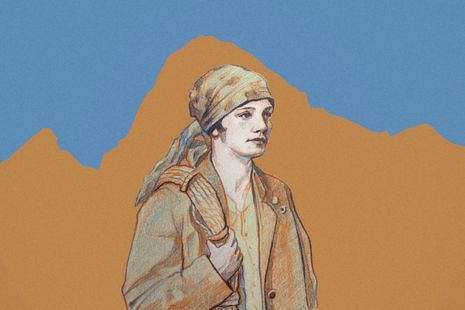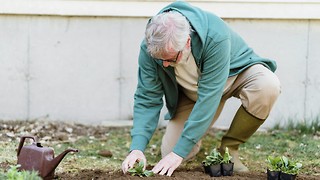‘Mountain madness’: Dorothy Pilley’s great-great nephew on her life and climbs
Abby Williams meets biographer Dan Richards to reflect on the incredible achievements of his great-great aunt, the pioneering alpinist Dorothy Pilley

One of the first truly pioneering female alpinists from Cambridge, Dorothy Pilley began climbing during the First World War when, on a family trip to Snowdonia, she experienced “the first time that she was given any physical freedom almost in her life, because at the time women had to be chaperoned everywhere”. Recalling that experience, she remarked that “mountain madness had me”.
I sit down for a conversation with Dan Richards, Dorothy Pilley’s great-great nephew, to reflect on her exceptional career. The challenges facing Dorothy – not just in climbing, but also in early 20th century life – were monumental and obstructive to this love for climbing. Despite having money, it was relatively new money due to her father’s work as a chemist, and consequently “the children were very much shunned to some degree by people from more established families”.
“Climbing for Dorothy was synonymous with freedom”
Having been shunned as somewhat of an outsider, Dorothy developed an affinity with those in similar situations. Richards comments that “she always had this eye and this empathic ear for the outsider because I think she knew how hard it was”. Climbing for Dorothy was synonymous with freedom, since her own abilities determined what she could do. It is at this point Richards wonders what would have happened if these barriers did not exist. He hypothesises that “she probably would have been a horticulturalist, and she would have been the most amazing horticulturalist. Kew Gardens would be named Pilley Gardens because she would have had that absolute energy and enthusiasm”.
Contemplating Dorothy’s numerous climbing achievements, Richards highlights “The Great Year,” in 1928, in which she made her monumental ascent of the Dent Blanche, a “sphinxy, beautiful mountain in Switzerland”. He mentions how, “one of the last great problems of that area of the Swiss Alps was the north face of this mountain. Her whole career, she’s in the area year after year with her husband, Ivor, and they befriend a local guide, Joseph Georges Liskia, and his brother, Antoine.” Before Dorothy, “it had never been climbed,” and it was not summited again for 15 years. I feel my palms growing sweaty as Richards narrates Dorothy’s first ascent using only hemp rope and a toothless axe, lodging the axe into cracks in between stones to do pull ups over it, dangling a thousand feet over a cliff edge.
“I genuinely think she’s one of the greatest British athletes of the 20th century”
Inspired by Dorothy’s 1935 memoir ‘Climbing Days’, Richards’ 2016 book of the same name details how he retraced the footsteps of his ancestor up the Dent Blanche: “I went back with my dad as one of our clients on this mountain, we got benighted on the side of it overnight. And so we were stuck there for a whole night in a snowstorm.” Once they returned to the village, the mark Dorothy had left on the community was evident in their kind reception. He remembers when “they discovered who we were and, you know, the Richards-Pilley-Georges kind of triangle is so well known within the villages that it was incredibly moving. But suddenly all of these Swiss guides were coming to shake our hands, which was lovely. And then once we had wine, they all told us what bloody idiots we were.” He explains Dorothy’s attitude to the mountains: “You’re not going in a sense of conquest. She did put up a lot of roots, but it was always with other people.”
Dorothy founded ‘The Pinnacle Club’ in 1921, which reported on climbs completed by women that were often deemed “suspicious” and would require a male ascent to validate the record. She “was changing the environment around her. You know, you build the world you want to live in to some degree,” notes Richards. Dorothy funded expeditions for members and, through this community, withstood the misogyny of ‘The Alpine Club’ and attempts to erase or downgrade the difficulty of the climbs completed by female climbers. “It changed the narrative and it moved the dial. When her memoir came out in 1935, you couldn’t help but take her seriously.”
It was only in her early seventies that a bad car accident stopped her from climbing. Despite this, her wish to remain in the mix of it never diminished. “She’d go up as high as she could get, either on a horse or a mule or up on a chairlift or something like that, and she’d watch other climbers.” Her adventures endure in the stories told: “There’s the fact that at dinner parties at Cambridge, given the opportunity and a couple of glasses of wine, she’d start holding forth about the horrors of dysentery in the Himalayas, or leeches when you’re doing an expedition in Burma, things like that.”
Richards remarks that, “I genuinely think she’s one of the greatest British athletes of the 20th century. “On the page and on the rocks, I just think she’s the most extraordinary person.”
 News / Uni Scout and Guide Club affirms trans inclusion 12 December 2025
News / Uni Scout and Guide Club affirms trans inclusion 12 December 2025 News / Cambridge Vet School gets lifeline year to stay accredited28 November 2025
News / Cambridge Vet School gets lifeline year to stay accredited28 November 2025 News / Cambridge study finds students learn better with notes than AI13 December 2025
News / Cambridge study finds students learn better with notes than AI13 December 2025 Science / Did your ex trip on King’s Parade? The science behind the ‘ick’12 December 2025
Science / Did your ex trip on King’s Parade? The science behind the ‘ick’12 December 2025 News / Pembroke to convert listed office building into accom9 December 2025
News / Pembroke to convert listed office building into accom9 December 2025








